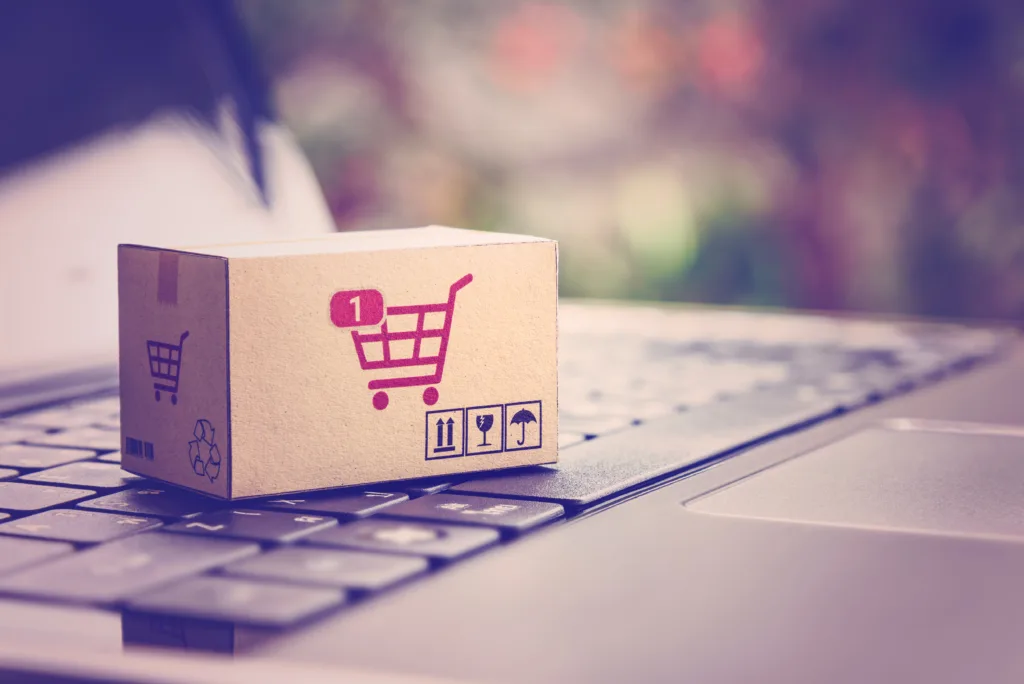B2B Lead Generation: Strategies for Building a Strong Pipeline of Potential Business Clients
What is B2B lead generation?
B2B lead generation, in essence, is the strategic process that companies undertake to cultivate potential business clients for their offerings. Distinct from the consumer-focused approach, it zeroes in on the specific needs and decision-making frameworks of other businesses. The primary goal? To forge a solid pipeline of prospects who show a genuine interest in what your business brings to the table.
At the heart of successful B2B lead generation lies a deep comprehension of the business environment, an aptitude for conveying value effectively, and a knack for building trust. The tactics employed in this domain are diverse, ranging from content marketing and networking to direct outreach and savvy digital campaigns. However, it’s crucial to remember that there’s no one-size-fits-all approach. Customizing your communication to resonate with the distinct requirements of potential clients can more accurately target their challenges, offering solutions that align with their business aspirations.

The Importance of B2B Lead Generation: How It Drives Effective Marketing and Sales Strategies
- Sustained Business Growth
- Targeted Market Outreach
- Building and Nurturing Relationships
- Understanding Market Needs and Trends
- Higher Conversion Rates
- Competitive Advantage
- Revenue Predictability
- Feedback and Continuous Improvement
- Sustained Business Growth: The primary aim of B2B lead generation is to continuously fill the sales pipeline with potential clients. This ongoing influx of prospects is essential for steady business growth and stability. Without a consistent flow of leads, businesses risk stagnation and decline in revenue.
- Targeted Market Outreach: B2B lead generation allows businesses to focus their marketing efforts on targeted segments. This targeted approach means resources are invested more wisely, engaging with prospects who are more likely to convert into paying customers.
- Building and Nurturing Relationships: In B2B contexts, sales cycles are often longer and involve higher stakes than in B2C transactions. Lead generation is not just about finding new potential clients; it’s also about nurturing these leads through the sales funnel. This process builds trust and establishes lasting relationships, which are the cornerstone of B2B success.
- Understanding Market Needs and Trends: Engaging in lead generation helps businesses stay attuned to market shifts and evolving customer needs. By interacting with prospects and analyzing lead data, companies can gain valuable insights that inform product development, service improvements, and marketing strategies.
- Higher Conversion Rates: Effective lead generation strategies lead to the accumulation of high-quality leads, which are more likely to convert into sales. This efficiency not only boosts the bottom line but also enhances the ROI of marketing efforts.
- Competitive Advantage: Robust lead generation capabilities can set a business apart from its competitors. By effectively identifying and reaching out to potential clients, a company can establish a more dominant presence in its market.
- Revenue Predictability: A consistent and effective lead generation process provides a more predictable pipeline of potential sales. This predictability is crucial for strategic planning, resource allocation, and financial forecasting.
- Feedback and Continuous Improvement: The lead generation process offers continuous feedback from the market. This feedback is vital for refining marketing messages, improving product offerings, and enhancing overall customer experience.
In essence, B2B lead generation is not just a tool for increasing sales; it’s a comprehensive approach to understanding and serving the market better, establishing meaningful relationships, and securing the long-term success and growth of a business.
How to generate leads for your B2B business
B2B lead generation serves as a critical bridge between your marketing initiatives and sales results. It’s about deploying strategies that not only attract potential customers but also convert them into high-value leads, perfectly synced with your sales processes.
- Identify your ideal buyer.
- Choose your lead generation strategies.
- Qualify your leads.
- Evaluate and improve your sales funnel.
- Identify Your Ideal Buyer: This foundational step involves understanding who your buyers are — from their job roles and industry specifics to their core challenges. Collaborative efforts between sales and marketing teams are key to crafting detailed buyer personas. For instance, if your product is a novel financial analytics tool, your research might reveal that your decision-makers are CFOs concerned with accuracy, scalability, and regulatory compliance. Pinpointing your buyer profiles ensures that your marketing strategies are sharply focused and effective.
- Select Your Lead Generation Strategies: Once you know your audience, choosing the right mix of strategies becomes crucial. This might include leveraging SEO, engaging in targeted content marketing, or using lead magnets on landing pages. A blend of these tactics often yields the best results, bringing a steady stream of leads to your doorstep.
- Qualify Your Leads: After generating leads, the next critical step is qualifying them. Initially, this involves sifting through marketing-qualified leads — those who’ve expressed interest in your offerings, perhaps by engaging with your content or signing up for a webinar. Subsequently, identifying sales-qualified leads, or those with a serious intent and capability to purchase, is vital. This process ensures that your sales team focuses their efforts on the most promising prospects.
- Evaluate and Enhance Your Sales Funnel: The efficacy of your lead generation efforts can be gauged by scrutinizing each stage of your sales funnel. Collaborative analyses by sales and marketing teams can pinpoint areas needing improvement — be it optimizing landing pages, refining lead magnets, or adjusting the messaging to address customer pain points more effectively. Continuous evaluation and refinement are key to ensuring that your lead generation process remains dynamic and effective, always adapting to new insights and market trends.

Unlocking Success: Effective B2B Lead Generation Strategies for Ecommerce Businesses
Effective lead generation is the lifeline of B2B eCommerce businesses, crucial for driving growth and building a strong customer base. By implementing a mix of tried-and-true strategies—such as publishing impactful case studies, crafting valuable lead magnets, and connecting through direct email campaigns—companies can attract and engage the right clients. Let’s explore how each of these strategies can be put into action to create a robust lead generation framework that turns prospects into partners.
- Publish case studies.
- Develop lead magnets.
- Engage in email marketing.
- Implement cold calling.
- Host educational webinars.
- Forge partnerships.
- Launch an affiliate program.
- Attend industry events.
- Take advantage of PR tactics.
- Use LinkedIn.
- Publishing Case Studies with WordPress or Squarespace: These platforms offer customizable templates perfect for showcasing case studies. Utilize their SEO tools to ensure your content ranks well in search results. You can add multimedia elements like images and videos to make the case studies more engaging. Additionally, integrating a call-to-action (CTA) button to “Learn More” or “Contact Us” can encourage reader interaction.
- Developing Lead Magnets with HubSpot or Mailchimp: Create compelling lead magnets like ebooks, checklists, or webinars using these platforms. Both offer easy-to-use design tools and templates. You can then set up landing pages with forms to capture lead information. They also provide analytics to track how many leads your magnet is generating and how they’re engaging with your content.
- Email Marketing with Klaviyo or Constant Contact: Segment your audience based on their interactions with your website, previous purchases, or engagement with past emails. Personalize your email content to cater to these segments. Use A/B testing features to determine which email versions perform better in terms of open rates and conversions.
- Cold Calling with Salesforce or HubSpot Sales: These CRMs can store and manage lead information, allowing you to track the history of interactions. You can schedule calls, set reminders, and even automate follow-up emails. Analyzing call logs can help refine your strategies and train your team based on what’s working.
- Hosting Webinars with Zoom, GoToWebinar, or Webex: Choose a platform based on your audience size and the level of interaction you want. These tools allow for live Q&A sessions, polls, and chat features to engage your audience. Record your webinars for later use, like lead magnets or content for your email campaigns.
- Forging Partnerships Using LinkedIn Sales Navigator: This tool helps in identifying potential partners in your industry. Use its advanced search to filter companies by size, location, or sector. You can then reach out to key decision-makers directly through InMail, making your partnership proposal more personal and direct.
- Managing an Affiliate Program with Post Affiliate Pro or Impact: These platforms allow you to track affiliate referrals, sales, and commissions. They provide a dashboard for affiliates to monitor their performance, access promotional materials, and understand their earnings. Regular communication and updates through these platforms keep affiliates engaged and motivated.
- Attending Industry Events Using Eventbrite and Meetup: Search for events that align with your business niche. These platforms can also be used to host your own events, such as workshops or networking mixers. They provide tools for event management, ticketing, and attendee tracking.
- PR Tactics with Cision and Meltwater: Use these platforms to create and distribute press releases to relevant media outlets. They can also help you monitor brand mentions across various channels, providing insights into how your PR efforts are resonating. Additionally, they offer databases of journalists and influencers you can connect with.
- LinkedIn Premium and Sales Navigator for Lead Generation: These services offer advanced search filters to find potential leads, see who’s viewed your profile, and get detailed insights about companies. Sales Navigator also provides a platform for tracking leads and managing relationships, making it easier to nurture leads through direct engagement.
By leveraging these specific tools, you can enhance each aspect of your B2B lead generation strategy, making it more effective and efficient

B2B lead generation is key for any eCommerce business looking to grow. By sharing success stories through case studies, offering useful lead magnets, keeping in touch with email marketing, and connecting directly with others in your industry, you can draw in more potential customers. Each tool and tactic mentioned is a step toward not just finding leads, but turning them into lasting business relationships. Stick to these strategies, and you’ll set your business up for a future of success.
If you have questions or need assistance executing these strategies, our team is available at hello@tidalcommerce.ca.
Footnotes:
- Shopify Plus. (2024, March 4). B2B Ecommerce Lead Generation Best Practices for 2024. Shopify. Retrieved April 1, 2024.


